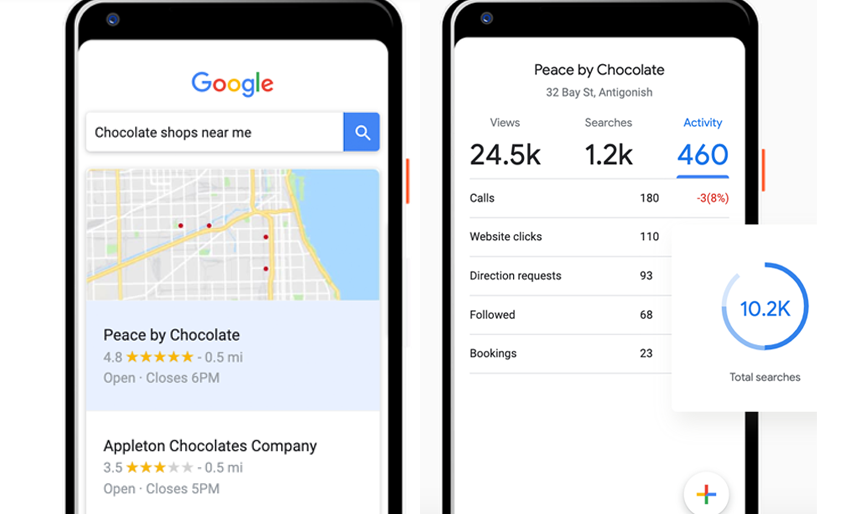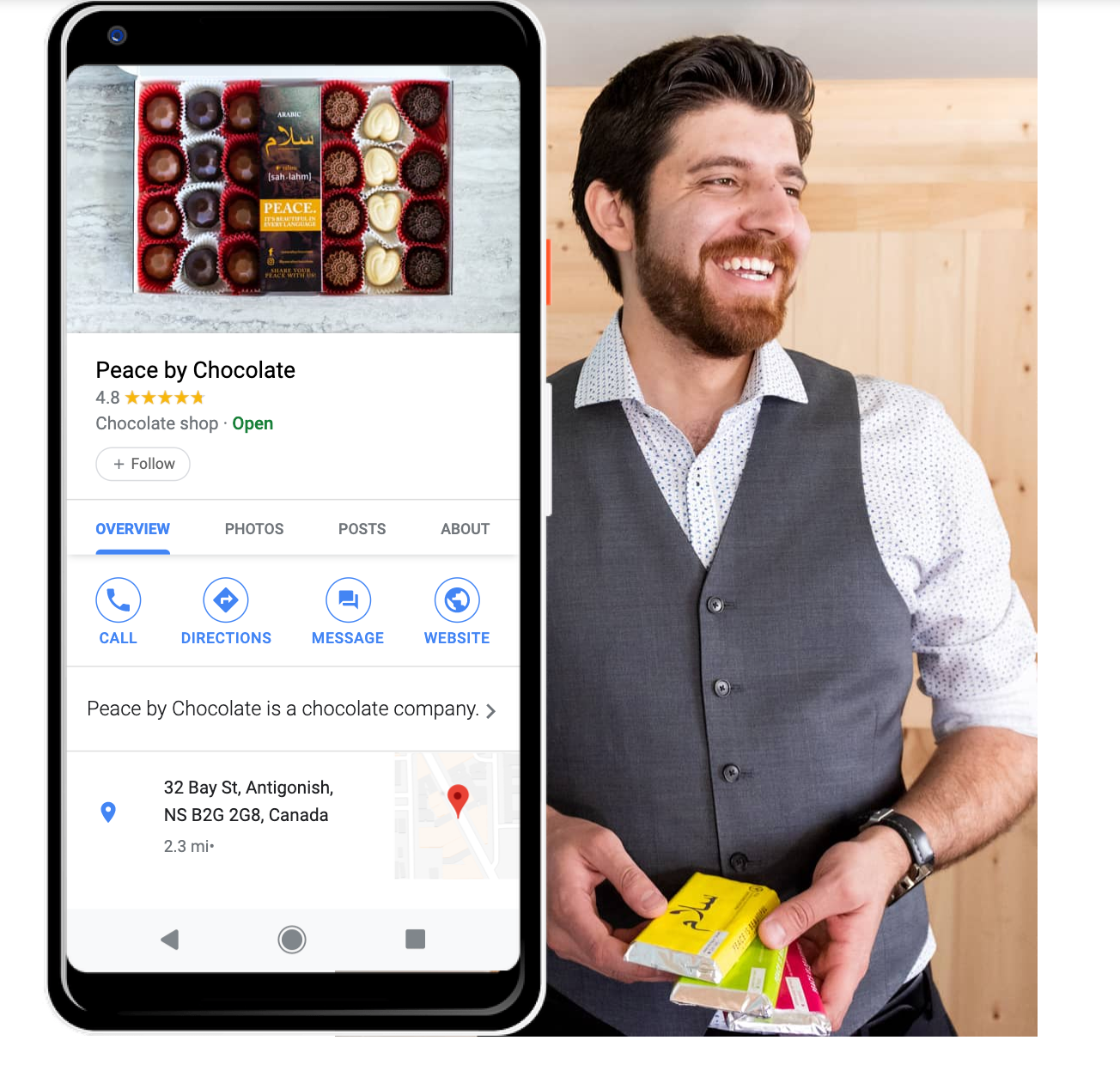SEO – or search engine optimization is the process of ensuring your digital business footprint is optimized for the search engines to effectively index and rank your content.
By optimizing your content for search, ideally, you’re improving the likelihood that your business information is shown to users searching for exactly what you offer.
We’ve all experienced search from a user perspective. When we open the google search engine to look up, well, anything and everything, we want to receive the ‘best’ results – the ones that are most seamlessly aligned to what we’re looking for.
In fact, after decades of browser searches, our expectation is that Google should know exactly what we’re looking for, including results that are ‘near me’ for convenience.
For this reason, local search and local SEO are more important than ever before!
The Importance of Local SEO
More and more, local intent is intertwined with search.
Consider a few recent stats:
- 46% of all Google searches feature a local intent.
- 78% of location-oriented searches will lead to an offline conversion.
- 28% of searches that include local intent will result in a purchase.
These numbers are pretty impactful, when you consider your user journey.
Lets compare this to offline activity for a moment, think about the numbers this way:
- What if almost half of people who found you in the phonebook were looking for a service-provider in their neighbourhood?
- What if more than three quarters of people who looked up a store on a map, led to a ‘conversion’, meaning perhaps the searcher called to inquire, or walked in to browse merchandise?
- And what if more than a quarter of those that found you on a map or looked you up in the phonebook, because they were nearby, would immanently buy from you?
The data drives home the importance of being ‘findable’ by your target customers, and in today’s digital World, that means maximizing local search opportunities.
Sure, there are location-independent options, like Amazon for shipping, but there’s still a very strong convenience factor (and comfort-level) for local business activity, and local intent. In fact, 97% of people learn more about a local company online than anywhere else.
Consider this: if you are exploring a new neighbourhood on an outing, and you search for ‘coffee shops near me’ on the map, there’s a pretty good chance you’re intending to go check out that coffee shop…either in the next few minutes, or you’re making a near-future plan to head there.
For a lot of businesses, customers will be specifically searching for results with ‘local intent’.
Searching With Local Intent
Capitalizing on customers’ ‘local intent’ when they search is crucial. If someone is looking for a product or service in a specific location, that person is generally pretty ready to visit that business – and possibly even buy right away.
Ensuring that your business’s digital footprint is optimized for local search intent is important for many business owners, but particularly for small business owners that may rely on local traffic.
So what’s the easiest way to begin optimizing for local SEO? Claiming your Google My Business listing! ( Bonus: this is a free service from Google.)
Google My Business Listings
There are several key benefits to claiming your Google My Business listing.
- GMB displays your listing on Google Search and Google Maps — this is really important because it’s directly linked to sales. In fact, 72% of users who do a Google search visit a store within 8km of where they were searching.
- GMB provides massive visibility for the top 3 results of a search. It provides the ability to click into an expanded listing, including NAP (Name, Address, Phone number.) Your goal, is of course, to be a ‘result’ in as many relevant searches as possible.

- You’ll be provided analytics with the listing. This will help you identify which prospective customers are coming to your listing.
Beyond these major benefits, you can dive deeper by:- Engaging with your customers from your My Business Account
- Requesting reviews
- Posting updates to your business profile
Starter Tips for your Google My Business account:
- Claim Your Business on Google Immediately.
56% of local businesses have not claimed their Google My Business listing – which is a huge miss. Be aware that your business may already have a listing, crowd-sourced by users, and it could have incorrect information on it. (i.e. wrong address or outdated phone number.) - Make sure you have an up-to-date NAP across all digital listings.
NAP is an acronym for name, address, phone number and Google will rank you better when your listing is consistent across the web. Tip: write your info the way you’d like it on your website and copy and paste that exactly across all channels.
- Keep your profile updated, informational and engaging. Aim for once per week, and make sure you have an accurate website listing, open hours, fresh photos, special offers and promotions to make it easy for customers to choose you.
Finding Local Businesses with Google Maps
Your Google My Business listing will also allow your business to be displayed on Google Maps. Given that the Google Maps app is used by 86% of people to look up a local business, this is another major benefit.
Put yourself in the shoes of the searcher again, for a moment.
Imagine you are searching to find a “coffee shop near me.” The most obvious way to search would be to click open your google maps app to find a short list of options.
Therefore, it’s important that your business shows up on the map if you want to be found – But it’s also important that your listing displays things like open hours, photos, a description, your website and reviews to help the searchers make their decision about what’s a good fit.
Fun fact: the search engine, Bing, also has business listings – and 82% of businesses have not claimed their listing on Bing Places. This opportunity is what we call ‘low-hanging fruit’. If you’re going through the process of setting up your Google My Business listing, we highly recommend setting up Bing at the same time.
Making it Easy For People To Contact You
Another major benefit of GMB is that you’re making it easy for people to find you and contact you – both in maps, and in search. Check out this screen capture example, below.

You can clearly see – the map location, a button to visit the website, a button to phone the store, get directions or message them.
Note that you can click directly on the phone link to open your calling app on your mobile phone– or directly click to visit the website in your mobile browser. You can also click on an email link to open a new email in your mail app.
This really is the most seamless user experience for customers looking for local businesses on mobile, especially when they’re out and about. Truth be told, 88% of searches for local businesses done on a mobile device either call or visit the business within 24 hours; with conversion rates that high, you don’t want to risk a bounce due to poor user experience that can be protected with easy optimization.
The bottom line: Claim your Google My Business listing now to improve your local search performance.